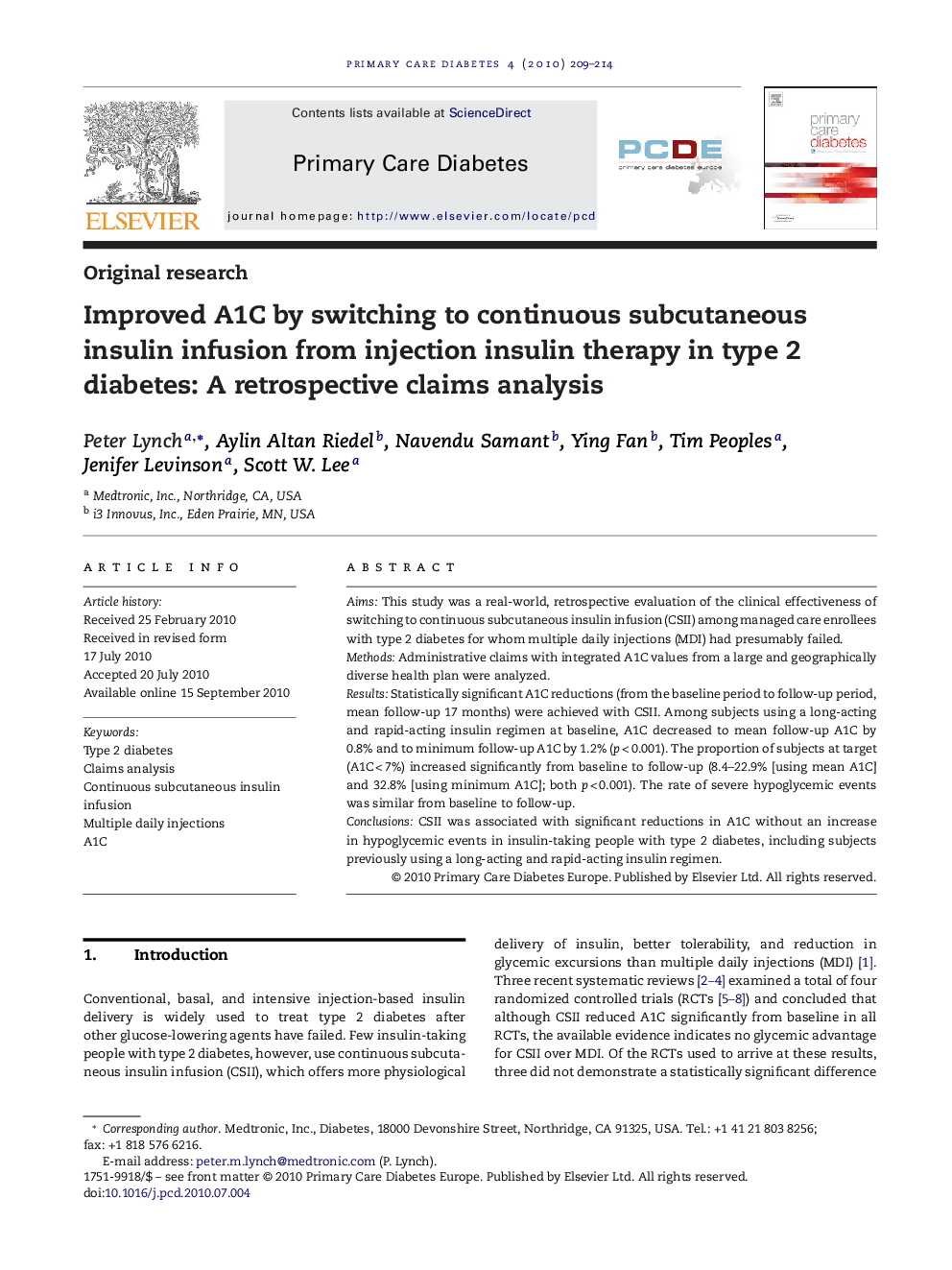| Article ID | Journal | Published Year | Pages | File Type |
|---|---|---|---|---|
| 2679101 | Primary Care Diabetes | 2010 | 6 Pages |
AimsThis study was a real-world, retrospective evaluation of the clinical effectiveness of switching to continuous subcutaneous insulin infusion (CSII) among managed care enrollees with type 2 diabetes for whom multiple daily injections (MDI) had presumably failed.MethodsAdministrative claims with integrated A1C values from a large and geographically diverse health plan were analyzed.ResultsStatistically significant A1C reductions (from the baseline period to follow-up period, mean follow-up 17 months) were achieved with CSII. Among subjects using a long-acting and rapid-acting insulin regimen at baseline, A1C decreased to mean follow-up A1C by 0.8% and to minimum follow-up A1C by 1.2% (p < 0.001). The proportion of subjects at target (A1C < 7%) increased significantly from baseline to follow-up (8.4–22.9% [using mean A1C] and 32.8% [using minimum A1C]; both p < 0.001). The rate of severe hypoglycemic events was similar from baseline to follow-up.ConclusionsCSII was associated with significant reductions in A1C without an increase in hypoglycemic events in insulin-taking people with type 2 diabetes, including subjects previously using a long-acting and rapid-acting insulin regimen.
